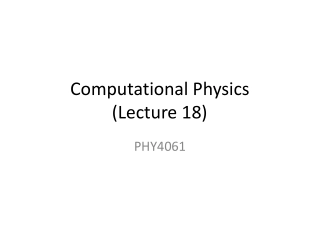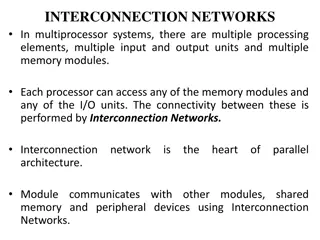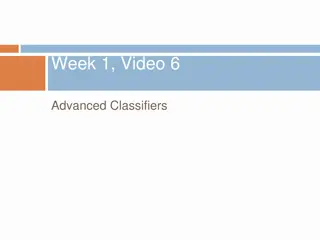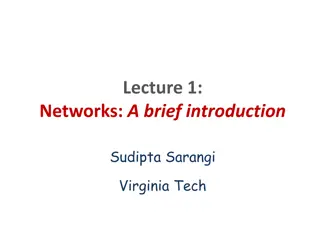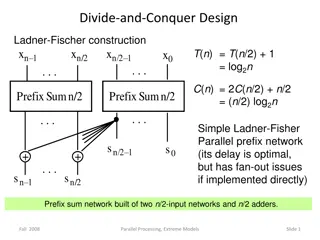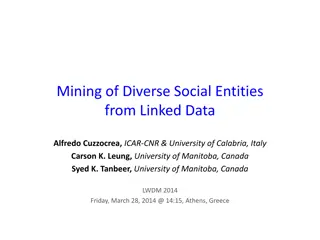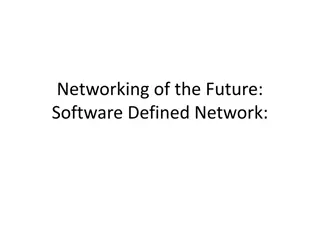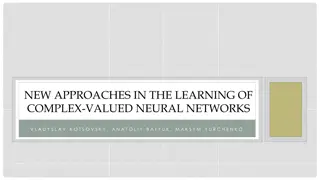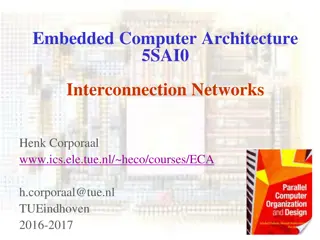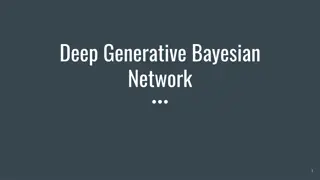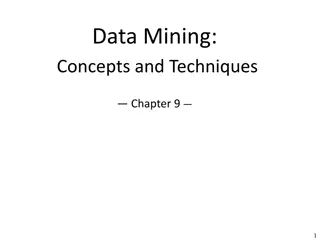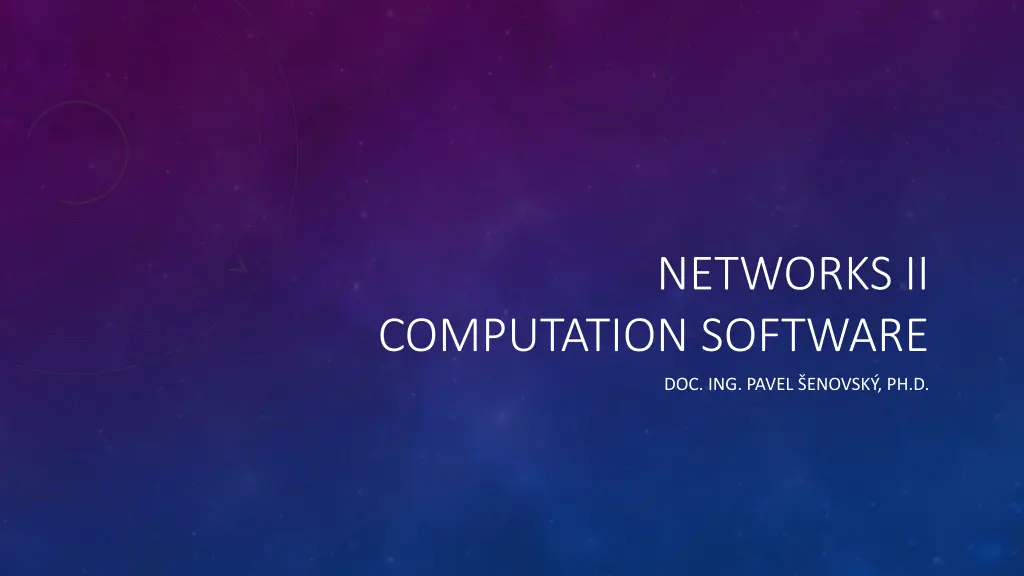
Understanding Computational Software Basics
Dive into the basics of computational software, explore available computation packages like SciLab and R, and learn about critical network vulnerabilities through practical examples in SciLab scripting. Enhance your understanding of system effectiveness over time, system degradation, and critical points of network resilience and vulnerability.
Download Presentation

Please find below an Image/Link to download the presentation.
The content on the website is provided AS IS for your information and personal use only. It may not be sold, licensed, or shared on other websites without obtaining consent from the author. If you encounter any issues during the download, it is possible that the publisher has removed the file from their server.
You are allowed to download the files provided on this website for personal or commercial use, subject to the condition that they are used lawfully. All files are the property of their respective owners.
The content on the website is provided AS IS for your information and personal use only. It may not be sold, licensed, or shared on other websites without obtaining consent from the author.
E N D
Presentation Transcript
NETWORKS II COMPUTATION SOFTWARE DOC. ING. PAVEL ENOVSK , PH.D.
BASICS OF USAGE OF COMPUTATIONAL SOFTWARE
COMPUTATION PACKAGES - WHAT IS AVAILABLE SciLab Open source: http://www.scilab.org/ Mostly compatible with MathLab Main differences are in available packages R Open source: https://www.r-project.org/ Statistical analysis, datamining, analysis in general Install distribution of R, then install specialized packages from repositories Relatively difficult to learn, but universal can be used on everything from PC to supercomputer Huge body of literature available lot of it free of charge
SCILAB USAGE, PRINCIPLES BY EXAMPLE UNDERSTANDING EFFECTIVITY OF SYSTEM IN TIME ? ? =?(?,?) (1 + ?)? W(k) function of evaluated system parameter y years r discount rate To get high quality output export to vector PDF
SCILAB SCRIPT y=(1:1:20); //from 1 to 20 with step 1 (from:step:to) -> result is vector r1 = 0; //scalar value r2 = 0.02; //semicolon means than no output in the SciLab window is displayed r3 = 0.05; w1 = 100 ./ ((1 + r1).^y); // symbol ./ means division of vector members (net division of vectors) w2 = 100 ./ ((1 + r2).^y); //analogically .^ means member-wise power w3 = 100 ./ ((1 + r3).^y); plot(w1, 'b'); //simplest graph function plot(what, 'color') plot(w2, 'r'); //plot commands build upon each other this line adds to plot another curve w2 plot(w3, 'g'); title("Degradation of system in years"); //set graph properties xlabel("years"); ylabel("efectivity [%]"); legend(["r = 0 %"; "r = 2 %"; "r = 5 %"]); //legend parameter is also vector, no of its members = no of plots in graph set(gca(), "data_bounds", matrix([1,20,30,105],2,-1)); //set axis bounds (what will be visible in graph)
CRITICAL VULNERABILITY OF NETWORKS WITH DIFFERENT SPECTRAL RADIUS log ? = ? ??? Where q resilience, vulnerability, network s spectral radius, b, k network specific constants Resilient networks have small spectral radius (~4), higly organized networks have large spectral radius (road network Netherlands 57, Internet 117, ) Critical point of network > resilience = 0 ? ??? = 0 Critical vulnerability: ? ?0= ??
SCILAB SCRIPT b = 1; b2 = 0.32; k = 1; k2 = 0.25; ro = 4:150; gama = (b * 100) ./ (k * ro); gama2 = (b2 * 100) ./ (k2 * ro); plot(ro, gama, 'b'); plot(ro, gama2, 'r'); title("Dependence of critical vulnerability on spectral radius of the network"); xlabel("spectral radius of the network"); ylabel("critical vulnerability of the network [%]"); legend(["b=1, k=1"; "b=0,32, k=0,25"]);
EXAMPLE 3D GRAPH DEPENDENCE OF MORTALITY ON SPEED OF FLOW AND HIGH OF THE FLOODING Empiric model <- based on studies with stability of people in the current under different circumstances Empiric data generalized into form of statistical models Limited usability but better then nothing ???= min max(8,5?0,6 6 0,15;0 ;1) min(max 8,5?1,2? 4,3 0,15;0 ;1)
3D PLOT h = 3:0.2:7; v = 0.1:0.1:2.5; vyska = min(max(8.5 * exp(0.6 * h - 6) - 0.15,0), 1); rychlost = min(max(8.5 * exp(1.2 * v - 4.3) - 0.15, 0), 1); fng = vyska' * rychlost; plot3d(h, v, fng, alpha=0, theta=270); xlabel("high of flooding [m]", "fontsize", 3); ylabel("speed water of rising [m/hod]", "fontsize", 3); zlabel("mortality", "fontsize", 3); title("Dependence of mortality on speed of water raising", "fontsize", 6); e = gce(); // Get current entity handle. e.color_flag = 1; // Color according to z f = gcf(); f.color_map = jetcolormap(32);
NUMERICAL REPRESENTATION OF THE NETWORK Matrix 2 basic ways to represent the network Using matrix (see right) Using list of graph edges (with evaluated properties) List of edges is more scalable The no of matrix elements grows exponentially with number of the edges But both representations are usable List of edges: list([1, 2, 10], [2, 4, 8], [1, 4, 12], [1, 3, 8], [3, 5, 10], [4, 5, 6])
NUMERIC SOLUTION OF NETWORKS IN SCILAB SciLab s preinstalled packages do not include functions to solve this kind of problems There is available package Numerics at http://www.ruhr-uni-bochum.de/num1/softwareE.html The package is primary intended to implement algorithms used in Numerics courses, which includes Dijsktra and Ford-Fulkerson algorithms (but also problems of numeric integration and other) The package Must be downloaded and unziped in folder of choice Inside SciLab the package must be connected before using its functions: mylib = lib(path) //complete path to the unziped package numerics_help() //obtain a short help concerning the functionality of the implemented functions ford_fulkerson(net,first,last) dijkstra(net,first,last)
CAPACITY PROBLEM AND SHORTEST PATH mylib=lib("/Users/pavelsenovsky/Numerics"); net = list([1,2,10], [2,4,8], [1,4,12], [1,3,8], [3,5,10], [4,5,6], [4,7,6], [4,6,9], [5,6,12], [7,8,11], [8,11,12], [6,10,10], [10,11,10], [5,9,11], [9,10,6], [9,11,9]); first=1; last=11; ford_fulkerson(net,first,last) dijkstra(net,first,last) in our case the result is 25 and 38 for shortest path
USING SOFTWARE R Slightly different philosophy Huge amount of packages Flexibility to use different input formats for graph definition Edge list GraphML Different types of notation allow for different properties of graph question, what exactly do you need? For graphs manipulation package igraph Usable for both computation and drawing of the graph
EDGE LIST CSV file for our experimental network: 1 2 10 2 4 8 1 4 12 1 3 8 3 5 10 4 5 6 4 7 6 4 6 9 5 6 12 7 8 11 8 11 12 6 10 10 10 11 10 5 9 11 9 10 6 9 11 9 Easy to do CSV format CSV = Comma separated values In this case replace coma with space Each edge is on separate line Format Start_node end_node property Property can be capacity/length
GRAPHML Based on XML (Extensive mark-up Language) Full specification http://graphml.graphdrawing.org/ Most software packages implement only subsets of the standard Necessary to learn what is (or is not) supported by the tool you use Basic structure of the file: <?xml version="1.0" encoding="UTF-8"?> <graphml xmlns="http://graphml.graphdrawing.org/xmlns" xmlns:xsi="http://www.w3.org/2001/XMLSchema-instance" xsi:schemaLocation="http://graphml.graphdrawing.org/xmlns http://graphml.graphdrawing.org/xmlns/1.0/graphml.xsd"> graph definition goes here </graphml>
GRAPHML - CONSTRUCTORS key defines property of the edges (in general terms) used in data <key id="d1" for="edge" attr.name="weight" attr.type="double"/> graph used for graph definition (type, node, edge and data go inside) <graph id="G" edgedefault="undirected"> </graph> node used for definition of the nodes in the graph (all nodes must be defined before using them in edge) <node id="n1"/>
GRAPHML CONSTRUCTORS II edge definition of the edge of the graph data used to store edge property (ie length) <edge source="n1" target="n2"> <data key="d1">10.0</data> </edge>
WHOLE GRAPHML FILE FOR EXPERIMENTAL NETWORK <edge source="n4" target="n5"> <data key="d1">6.0</data> </edge> <edge source="n4" target="n6"> <data key="d1">9.0</data> </edge> <edge source="n5" target="n6"> <data key="d1">12.0</data> </edge> <edge source="n4" target="n7"> <data key="d1">6.0</data> </edge> <edge source="n6" target="n7"> <data key="d1">6.0</data> </edge> <edge source="n7" target="n8"> <data key="d1">8.0</data> </edge> <edge source="n8" target="n11"> <data key="d1">12.0</data> </edge> <edge source="n6" target="n10"> <data key="d1">10.0</data> </edge> <edge source="n10" target="n11"> <data key="d1">10.0</data> </edge> <edge source="n5" target="n9"> <data key="d1">11.0</data> </edge> <edge source="n9" target="n10"> <data key="d1">8.0</data> </edge> <edge source="n9" target="n11"/> </graph> </graphml> <?xml version="1.0" encoding="UTF-8"?> <graphml xmlns="http://graphml.graphdrawing.org/xmlns" xmlns:xsi="http://www.w3.org/2001/XMLSchema-instance" xsi:schemaLocation="http://graphml.graphdrawing.org/xmlns http://graphml.graphdrawing.org/xmlns/1.0/graphml.xsd"> <key id="d1" for="edge" attr.name="weight" attr.type="double"/> <graph id="G" edgedefault="undirected"> <node id="n1"/> <node id="n2"/> <node id="n3"/> <node id="n4"/> <node id="n5"/> <node id="n6"/> <node id="n7"/> <node id="n8"/> <node id="n9"/> <node id="n10"/> <node id="n11"/> <edge source="n1" target="n2"> <data key="d1">10.0</data> </edge> <edge source="n1" target="n4"> <data key="d1">12.0</data> </edge> <edge source="n1" target="n3"> <data key="d1">8.0</data> </edge> <edge source="n2" target="n4"> <data key="d1">8.0</data> </edge> <edge source="n3" target="n5"> <data key="d1">10.0</data> </edge>
R SCRIPT TO COMPUTE THE FILE # hash is considered comment library(igraph) sit <- read.graph("/Users/pavelsenovsky/Documents/skripta/modelovani 3vyd/skripty/sit.graphml", "graphml") #load igraph package #huge benefit of using igraph is that it knows lot of graph formats no need to transform it outside R plot(sit) #R is capable to automaticaly generate graph with properties (very powerfull tool) shortest.paths(sit, 1, 11) #numeric computation of shortest path get.all.shortest.paths(sit, 1, 11)
GENERATED GRAPH Graph may be generated in many different ways using R Graph capabilities are one of most confusing problems for R users There exist whole textbooks on graph generation in R! Consider using different programs for visualization of data Many open source available Gephi https://gephi.org/ Cytoscape http://www.cytoscape.org/ Many others

